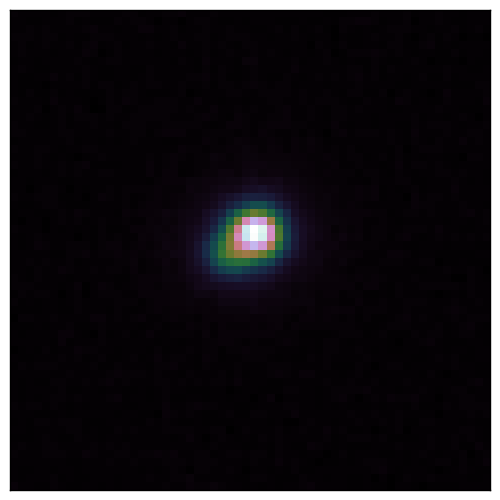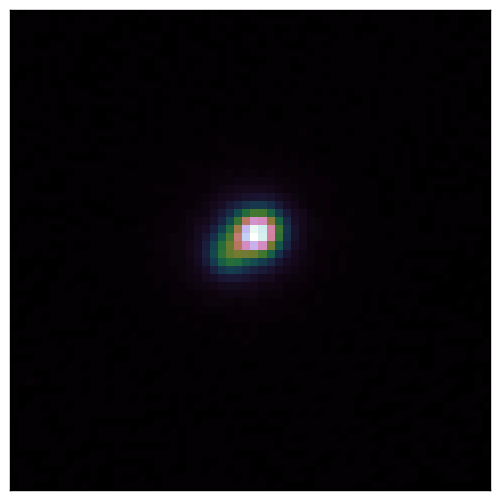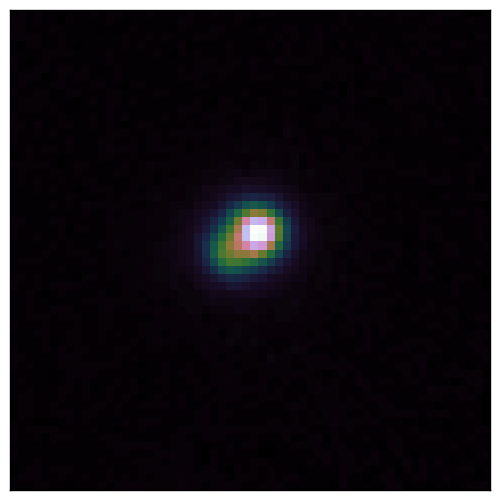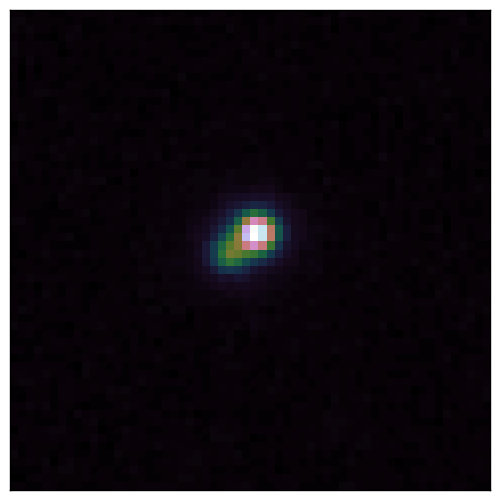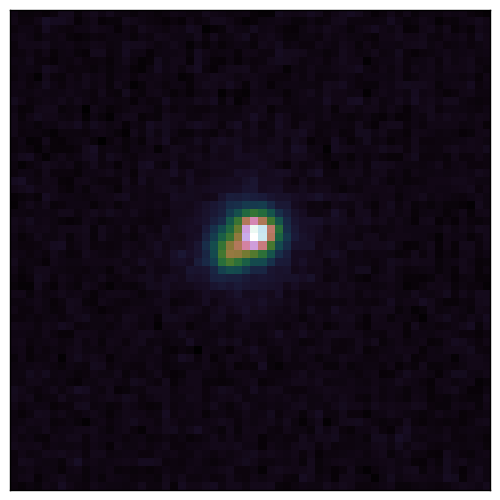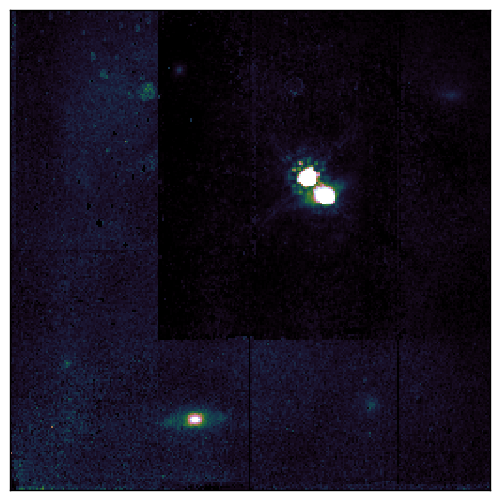Relevant Publications
Apr 1998: The First FIRST Gravitationally Lensed Quasar: FBQ 0951+2635, Schechter et al. 1998
Oct 1999: CTQ 414: A New Gravitational Lens, Morgan et al. 1999
Feb 2001: The Gravitational Lens Candidate FBQ 1633+3134, Morgan et al. 2001
00 2002: Quasar Lensing, Courbin, Saha & Schechter 2002
Jun 2002: A Submillimeter Survey of Gravitationally Lensed Quasars, Barvainis & Ivison 2002
Aug 2003: The redshift distribution of gravitational lenses revisited: constraints on galaxy mass evolution, Ofek, Rix & Maoz 2003
Aug 2003: SDSS J092455.87+021924.9: An Interesting Gravitationally Lensed Quasar from the Sloan Digital Sky Survey, Inada et al. 2003
Sep 2003: The Fundamental Plane and the evolution of the M/L ratio of early-type field galaxies up to z~ 1, van de Ven, van Dokkum & Franx 2003
Nov 2004: Hubble constant from lensing in plasma-redshift cosmology, and intrinsic redshift of quasars, Brynjolfsson 2004
Feb 2005: An optical time delay for the double gravitational lens system FBQ 0951+2635, Jakobsson et al. 2005
Jun 2005: COSMOGRAIL: The COSmological MOnitoring of GRAvItational Lenses. I. How to sample the light curves of gravitationally lensed quasars to measure accurate time delays, Eigenbrod et al. 2005
00 2006: VizieR Online Data Catalog: Variability of 5 gravitationally lensed QSOs (Paraficz+, 2006), Paraficz et al. 2006
Jun 2006: Time delay of SBS 0909+532, Ullán et al. 2006
Aug 2006: Microlensing variability in time-delay quasars, Paraficz et al. 2006
Oct 2006: Probing the Coevolution of Supermassive Black Holes and Galaxies Using Gravitationally Lensed Quasar Hosts, Peng et al. 2006
Apr 2007: COSMOGRAIL: the COSmological MOnitoring of GRAvItational Lenses. VI. Redshift of the lensing galaxy in seven gravitationally lensed quasars, Eigenbrod, Courbin & Meylan 2007
Jul 2007: The Quasar Accretion Disk Size - Black Hole Mass Relation, Morgan et al. 2007
Sep 2007: The Hubble Constant, Jackson 2007
Jan 2008: Origin of chromatic features in multiple quasars. Variability, dust, or microlensing, Yonehara, Hirashita & Richter 2008
Mar 2008: Microlensing variability in the gravitationally lensed quasar QSO 2237+0305 ≡ the Einstein Cross . I. Spectrophotometric monitoring with the VLT, Eigenbrod et al. 2008
Feb 2009: Differential X-Ray Absorption and Dust-to-Gas Ratios of the Lens Galaxies SBS 0909+523, FBQS 0951+2635, and B 1152+199, Dai & Kochanek 2009
Aug 2009: Microlensing variability in FBQ 0951+2635: short-time-scale events or a long-time-scale fluctuation?, Shalyapin et al. 2009
Dec 2009: Microlensing-based Estimate of the Mass Fraction in Compact Objects in Lens Galaxies, Mediavilla et al. 2009
00 2010: Robotic Optical Monitoring of a Compact Lens System: FBQ 0951+2635 in the i Sloan Filter, Ullán et al. 2010
Mar 2010: Improved Constraints on the Gravitational Lens Q0957+561. II. Strong Lensing, Fadely et al. 2010
Apr 2010: The Quasar Accretion Disk Size-Black Hole Mass Relation, Morgan et al. 2010
00 2011: Primordial Planet Formation, Schild & Gibson 2011
Feb 2011: A Study of Gravitational Lens Chromaticity Using Ground-based Narrowband Photometry, Mosquera et al. 2011
Dec 2011: Time delays for eleven gravitationally lensed quasars revisited, Eulaers & Magain 2011
Dec 2011: A Study of Gravitational Lens Chromaticity with the Hubble Space Telescope, Muñoz et al. 2011
Feb 2012: COSMOGRAIL: the COSmological MOnitoring of GRAvItational Lenses. X. Modeling based on high-precision astrometry of a sample of 25 lensed quasars: consequences for ellipticity, shear, and astrometric anomalies, Sluse et al. 2012
Apr 2012: Time-Domain Studies of Gravitationally Lensed Quasars, Goicoechea & Shalyapin 2012
May 2012: VizieR Online Data Catalog: Spectra of 13 lensed quasars (Sluse+, 2012), Sluse et al. 2012
May 2012: The Sloan Digital Sky Survey Quasar Lens Search. V. Final Catalog from the Seventh Data Release, Inada et al. 2012
Aug 2012: Microlensing of the broad line region in 17 lensed quasars, Sluse et al. 2012
Jan 2013: Microlensing Analysis of Quasars FBQ0951+2635 and SDSS1650+4251, Martin et al. 2013
Mar 2013: Gravitational lensing evidence against extended dark matter halos, Magain & Chantry 2013
May 2013: Dust, Gas, and Metallicities of Cosmologically Distant Lens Galaxies, Chen et al. 2013
May 2013: Bayesian approach to gravitational lens model selection: constraining H0 with a selected sample of strong lenses, Balmès & Corasaniti 2013
Jan 2014: Monitoring the Lensed Quasars FBQ 0951+2635 and SDSS 1650+4251 in the Near-Infrared: Technical Challenges, Demers et al. 2014
Jun 2014: A Comparison of Cosmological Models Using Time Delay Lenses, Wei, Wu & Melia 2014
Feb 2015: Constraining Cosmological Parameters with Image Separation Statistics of Gravitationally Lensed SDSS Quasars: Mean Image Separation and Likelihood Incorporating Lens Galaxy Brightness, Han & Park 2015
Aug 2015: H0 from ten well-measured time delay lenses, Rathna Kumar, Stalin & Prabhu 2015
May 2016: Subaru Telescope adaptive optics observations of gravitationally lensed quasars in the Sloan Digital Sky Survey, Rusu et al. 2016
Jul 2016: Time delay cosmography, Treu & Marshall 2016
Aug 2016: The mass-sheet degeneracy and time-delay cosmography: analysis of the strong lens RXJ1131-1231, Birrer, Amara & Refregier 2016
Mar 2017: Measuring the Innermost Stable Circular Orbits of Supermassive Black Holes, Chartas et al. 2017
Aug 2018: Systematic Redshift of the Fe III UV Lines in Quasars: Measuring Supermassive Black Hole Masses under the Gravitational Redshift Hypothesis, Mediavilla et al. 2018
Aug 2018: Cosmological Distance Indicators, Suyu et al. 2018
Feb 2019: Reconciling the quasar microlensing disc size problem with a wind model of active galactic nucleus, Li, Yuan & Dai 2019



